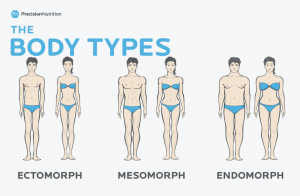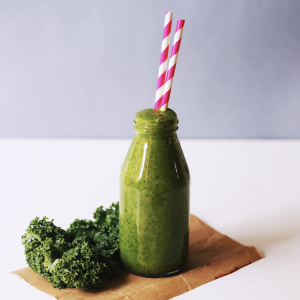Elimination, Caloric Restriction, Apps and Fasting: The Most Popular Diet Trends of 2020
Recently, while doing some administrative work and organizing, I started looking through some client intake questionnaires from the past year. Nearly everybody who approaches me for nutrition coaching has tried a few different “diets”. A couple of years ago I had some former Keto followers, a couple of former Carnivores, and even some folks from the Paleo era. Over the years, popular diets change, but peoples’ desire for a quick fix and a catchy name does not. I decided to do a little digging to see what the most popular diet trends of 2020 are and across this article from
. It does a pretty good job of quickly breaking down both specific diets and broader nutrition-related search terms that were Googled the most in 2019. The information is presented in a list of ten items, most of which are actual diets and a couple is more conceptual, broader searches.
Elimination Diets
As with most years, elimination diets were alive and well last year with the “J.Lo Diet” and the “Endomorph Diet”. Jennifer Lopez’s diet was more of a ten-day challenge than a longer-term diet solution. She challenged people to cut out all sugar and all carbohydrates, including fruits, starchy vegetables, and dairy products, along with more obvious choices, like candy and soda. The intention was to “reset” and eventually eliminate cravings for sweets after the ten days. This might work for some in the very short term, but there’s no strategy for the long-term lifestyle.

The Endomorph Diet, which has been around since the 1940s, focuses on attempting to eat optimally for an endomorph body type–larger bones and joints, wider hips, and larger deposits of body fat. While it’s not a strict elimination diet, it does limit starchy carbohydrates, saturated fat, and red meat in favor of unsaturated fats, leaner protein, and vegetables. Like many other diets, the goal is to control insulin release, since proponents of this diet believe that endomorphs are less insulin sensitive and excess sugars are more likely to be converted to body fat with this body type. Whether or not this is true, the efficacy of this diet can likely be traced to the near elimination of high calorie, highly palatable foods, which would limit the chances of overeating.
High Caloric Restriction
High caloric restriction diets garnered many clicks last year, and for good reason: they work. They work for dropping bodyweight fast, they’re fairly simple, but they are only effective for a very short period, and the likelihood of rebounding is extremely high. Most of these diets set an arbitrary, very difficult daily caloric ceiling (1200 Calorie Diet), and some use variations on fasting as the method of restriction.

“The Sirtfood Diet”, one of the latest adventures in caloric restriction, has become fairly popular in Europe this past year, but not so much in the United States…yet. The diet is built around optimizing one’s intake of sirtuins–seven different molecular proteins that assist cells in regulating inflammation, metabolism, and longevity. The general idea is to increase your intake of foods with high levels of sirtuins, while also following a strict, short, phasic reduction in total daily calories. Some examples of “Sirtfoods” are:
- Red wine
- 85% cocoa Dark Chocolate
- Kale
- Onions
- Strawberries
- Blueberries
- Arugula
In Phase One of the diet, which lasts seven days, practitioners are restricted to 1,000 calories for the first three days. They can consume 1,500 calories per day for the next four days. The calories are to come from lots of a “green juice” concoction and some high sirtuin whole food meals. Phase Two, the “maintenance phase” lasts two weeks, and doesn’t have any specific caloric restrictions. Practitioners eat three whole food meals one serving of the green juice. Compliant recipes for meals and the green juice can be found in the book, The Sirtfood Diet.

The hope with this diet seems to be that people will lose about seven pounds of body weight in the first week, and continue losing weight across the final two weeks. After that, eating in this fashion might become more habitual, thus turning it from a diet into a lifestyle. Whether or not any of the results from the diet turn out to be meaningful will be highly dependent upon the individual, just like any other diet/eating practice.
Apps, Plants, and Fasts
Rounding out the top three searches of last year were an app-based diet, called Noom, variations on plant-based diets, and intermittent fasting, respectively.

Noom is a subscription-based app that claims to use comprehensive psychological evaluation to help people get fit or lose weight “for good”. Subscribers get some amount of personal attention and a lot of accountability content throughout the week. It’s unclear how many clients one coach is handling at one time, but for the price-point, I’d imagine it’s a lot.An interesting fact about Noom is that they are listed by the Center for Disease Control and Prevention as a recommended Type-2 diabetes prevention program.

Plant-based diets were widely searched, as well, in many different forms. This can likely be attributed, at least in part, to the release of the “Game Changers” documentary. In our gym, it was really common to hear people talk about how they immediately switched to plant-based eating after watching that documentary. However, none of the members of our community (that I know of) stuck with the practice long-term. Not that such diets are unsustainable, but flipping to such a radically different diet overnight exponentially decreases the chance of the new practice becoming a part of your lifestyle.

The top nutrition-related search of the past year was intermittent fasting. For a primer on this practice, you can check out my previous article on some of the potential benefits of intermittent fasting. There are tons of ways to practice this method of eating, but in a nutshell, you’re looking to restrict your ability to consume calories by setting a window of time during the day that you’re allowed to eat. There are tons of potential benefits, relating to weight control/loss, regulating metabolism, reducing systemic inflammation, and even promoting longevity.
The Truth
The tough truth about the diets that come and go each year is that they work. Yes, assuming you follow the rules, every diet works…until it doesn’t. Most of these and other “fad diets” are based on elimination or restriction, which is doable in the short-term and is exactly how elimination diets are supposed to be practiced. Barring any food allergies or chronic disease, elimination diets are supposed to be temporary to solve a specific problem. Once the problem is solved, your lifestyle alters a bit to accommodate for any necessary change, and you move on.
Support for the long-term is the Achilles heel of modern dieting. What are you supposed to do after the newbie gains are gone six weeks in? Restrict calories from 1,200 to 1,000? Should you cut more carbs? Stop eating fruit? A big reason these diets are attractive to people is that they take something like a macronutrient or food group, and tell you to reduce or cut it out entirely. Great! Now that removes any responsibility you previously had when somebody offered you a cake, fruit, meat, or anything else that you simply cannot eat anymore because the rules forbid it. How long is that going to last? Are you always going to skip a little indulgence on special occasions? Are you always going to beat yourself up for “giving in”? Fad diets lack balance, and that is really easy to say, yet it’s really hard to define what that means.
When a new client comes to me after “trying everything”. I like to give the analogy of diets being like pitstops along the road on your optimal nutrition journey. What optimal nutrition looks like is an ever-changing destination, and each of us has a different destination.
Thanks for reading.



















TRS Virtual Mobility Coach
Guided mobilization videos customized for your body and lifestyle.
FREE 7-Day Trial